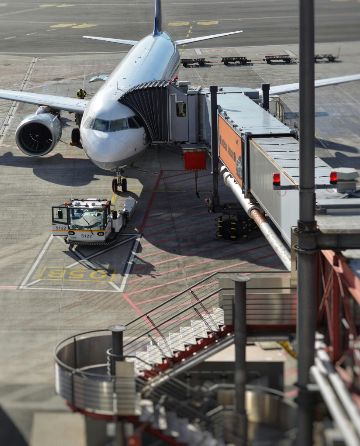Australian Air Freight Company
Australia’s air freight network supports the nation’s trade, mining operations, healthcare logistics, and e-commerce fulfilment. This publication observes the industry from an editorial point of view, covering market developments, regulatory shifts, and the complex movement of cargo across the continent.

Australian Air Freight Industry: The Backbone of a Connected Economy


Writer by Logan Greenfield
Logan writes about air freight and supply chain practices in Australia. He blends market insight with real industry context so readers understand how air cargo works, from domestic hub routes to specialist charter capacity.
The Rising Demand for Air Freight Across Australia
In recent years, Australia’s air freight sector has evolved from a niche logistics service into a critical pillar of the national economy. As businesses expand across states and remote regions, fast and reliable air transport has become the preferred solution for industries that can’t afford delays — including mining, medical supply chains, and e-commerce fulfillment.
According to data from the Bureau of Infrastructure and Transport Research Economics (BITRE), Australia handled more than 920,000 tonnes of domestic air cargo last year, reflecting steady growth in line with economic recovery and online retail expansion. This upward trend is expected to continue as domestic trade routes strengthen and new regional hubs emerge.
Connecting the Regions: Why Air Freight Matters
Air freight plays a vital role in connecting Australia’s geographically vast landscape. From Perth to Brisbane, and Darwin to Hobart, it ensures the movement of goods across thousands of kilometres in record time. For industries operating in isolated areas — such as mining and oil — air cargo often becomes the only viable link to major supply networks.
Speed: Rapid delivery of time-sensitive cargo.
Reach: Access to regional and remote destinations.
Reliability: Stable schedules less affected by road or sea disruptions.
While sea and road freight remain dominant for bulk commodities, air cargo remains irreplaceable for high-value, urgent, and perishable goods.
A Competitive Market Led by Innovation and Expertise

In this competitive market, choosing a Australian air freight company that understands both local compliance and international logistics can make the difference between on-time delivery and costly delays. Reliable partners combine technology, regulatory compliance, and experience in handling diverse cargo types — from mining parts to medical equipment.
Key Factors Businesses Consider When Selecting a Freight Partner
Selecting a freight partner in Australia is no longer a simple rate-comparison exercise. Operators face different compliance requirements, geographic challenges, customer expectations, and service guarantees across the national air network. These are the primary considerations most companies evaluate today:
Experience and safety record under CASA oversight.
Safety history is still the first filter for any critical cargo movement. Proven compliance, secure screening procedures, and a strong safety culture are central indicators of reliability. CASA governance remains the benchmark reference for risk.Domestic and international network coverage.
The ability to move cargo through domestic trunk routes and connect to international gateways matters. Many businesses look for service providers who can integrate domestic uplift with global air networks without unnecessary handover delays.Handling capabilities for oversized or regulated goods.
Mining equipment, medical consignments, temperature-sensitive packages, and dangerous goods require specialised handling. Companies often evaluate whether their partner can provide correct packaging standards, compliance documentation, and correct aircraft type allocation.Customer support and transparency in communication.
Live updates, predictable ETAs, and real-time tracking tools help reduce uncertainty. Operators who provide clear visibility — especially during service disruptions — are seen as more trustworthy.Cost efficiency balanced against performance.
It’s no longer “cheapest rate wins.” Businesses prioritise the efficiency of the route, the timing, and the assurance that the operation will proceed as scheduled. Cost is considered in context of reliability, not in isolation.
Regulatory Oversight and Industry Standards

Beyond compliance, the International Air Transport Association (IATA) continues to provide global standards that improve efficiency and safety. Together, these frameworks help ensure that every shipment — from a small parcel to an aircraft engine — moves under strict quality control.
Looking Ahead: Growth and Sustainability in 2025
As global supply chains adapt to post-pandemic shifts, Australia’s freight industry is positioned for growth through sustainability and regional investment. More airlines are integrating green technology, and regional airports are being upgraded to handle increased cargo throughput.
This evolution signals opportunity — not just for logistics providers, but for businesses across Australia that rely on air transport to maintain momentum in a fast-moving market.
The Future Outlook
The trajectory of Australia’s air freight economy continues to move towards faster, cleaner, and more integrated movement of goods. Multiple national and regional indicators point to an industry in transition — shaped by efficiency targets, environmental pressure, and increasing demand from time-dependent sectors.
Expansion of regional air hubs in Queensland and Western Australia.
State investment programs and airport upgrades are enabling more regional uplift capacity. This is particularly relevant for mining districts, agriculture zones, and remote supply chains that need closer access to scheduled air cargo departures.Increased adoption of sustainable aviation fuels.
Both domestic carriers and international operators are testing and scaling alternative fuel options. Although still early, the aviation sector is under growing pressure to decarbonise and demonstrate progress against national sustainability expectations.Growing demand for same-day and express services.
Online retail and critical inventory models have raised the baseline standard. Businesses are less tolerant of delays, which incentivises the air cargo network to maintain tighter turnaround times and stronger peak-season resilience.Integration of predictive logistics powered by AI.
Predictive operations — using real-time data feeds, historical route behaviour, and dynamic capacity allocation — are expected to influence future route planning and cargo distribution. Automation at this level can reduce wasted capacity and improve on-time performance across multiple corridors.
Stay Connected with Australia’s Freight Network
Australia’s air freight landscape will keep evolving as technology, regulation, and market expectations shift. For those who want continued context on industry developments or need further clarification on trends in domestic cargo, you can reach the editorial desk here: about us / contact us.
This channel is open for inquiries, interviews, or questions related to the Australian aviation cargo ecosystem. Readers can request additional resources, propose topics, or discuss coverage related to national air logistics.
✅ Learn more: Australian Air Freight Company: Procurement, Logistics, and the Network Behind Australia’s Skyborne Trade
Related Posts
- Domestic Air Cargo Services in Australia
- International Air Cargo Services in Australia
- Customs Clearance for Air Cargo in Australia
- Door-to-Door Air Freight Delivery Options
- How Chargeable Weight Impacts Air Freight Pricing
- Time Critical and Same-Day Air Freight Services
- Air Freight for Mining and Remote Regions in Australia
- Air Freight Insurance: How to Protect High Value Cargo
Direct Air Cargo Services for Domestic and International Shipments
Australian air freight companies play a central role in connecting domestic and international trade. They coordinate aircraft capacity, manage bookings, handle compliance, and support industries that need faster transit times than sea freight. Whether you operate within Australia or export offshore, the right air freight partner can help your supply chain become more predictable and more responsive to market demand.

